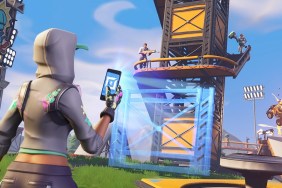Jam on it.
Like just about everyone who has ever held an instrument in their hands, I had
dreams of being in a rock band. Following in my grandpappy’s
footsteps, I spent a lot of time practicing on my guitar. It was a beautiful
instrument, made of a finely-crafted tub of whipped cream and only the highest
quality rubber bands. Unfortunately, my 5 year-old self was never able to nail
down a record contract. I must have been ahead of my time.
I still like to make music, and hey, if I can combine it with video games,
then that’s all the better. Amplitude, the follow-up to Frequency,
offers some light remixing, tuned up gameplay and more robust online features.
As far as musical rhythm games go, this is one catchy little number.
In
Frequency, eight different musical tracks were arranged in a tunnel shape,
ala Tempest. Amplitude rolls these tracks out into a flat musical
highway. Each individual track corresponds to a different component of the music,
such as drums, bass or vocals.
Sitting atop these tracks are little capsules containing locked bits of music.
You must shoot these capsules using a little flying ship known as the Beat Blaster.
Time it right and music will play. Keep the streak going and the score will
go up. Screw up and your energy drains.
To help keep that energy healthy, Amplitude offers several new power-ups.
In addition to a score multiplier and an auto-catcher that clears one track
out of the way, a new slowdown power-up momentarily makes it easier to keep
up with the rhythm.
Originally, Freestyle mode was attained when tracks were cleared. Amplitude
changes Freestyle into an obtainable power-up. The Beat Blaster temporarily
lifts above the different tracks as you scratch out a free beat to the music.
All of these power-ups are critical towards maintaining a streak and building
up your score.
Frequency offered a customizable avatar called a FreQ. Amplitude
does it one better, modeling the little guy in 3D. While the Beat Blaster zips
down the musical highway, the little FreQ jams out on a micro-instrument to
correspondent to the track. When you complete songs in the single-player mode,
additional FreQ’s are unlocked.
Besides the solo game mode, Amplitude carries over the Remix mode of
Frequency that allows you to arrange music using the same interface as
the main mode. Tracks can’t be interchanged – you are only working within the
bounds of what is already there. While it isn’t quite like real audio mixing,
if it piques your interest, it gives back as much as you are willing to put
in. Completed songs can even be uploaded online for judging and play.
The multiplayer and online modes place one to four players on the same highway
as they compete for a high score. Normally the tracks are color-coded to match
the musical component. In multiplayer, however, the tracks are color-coded to
match the players. It gets a bit confusing. I wish they stuck to the component
colors and delivered the player color information in another manner. Theirs
is also another game mode that plays out like H-O-R-S-E, where one players sets
out a pattern to be copied by the second player.
I’ve found that the online players tend to be really good; in a way, the solo
mode is just a training ground to eventually go against the zealots with lightning
fingers. Amplitude is really a game of practice, as you repeat and repeat, building
up a strategy for each song. It can therefore get repetitive grooving out over
and over again to the same songs.
 Ironically
Ironically
enough, when Brian reviewed Frequency, he said, “Don’t expect to find
blink 182 or any other mainstream bands in here.” Well, that’s exactly what
you will find in Amplitude. Recognizable bands such as Garbage, Slipknot
and even Pink sit next to underground groups like BT and Komputer Kontroller.
Musical styles are a matter of personal choice, but the game works best for
me with styles I already like. My tastes are pretty broad, but in terms of the
game, Quarashi, P.O.D., Bowie and the trance selections work best. The choices
of Mekon, The Baldwin Brothers, and some of the metal selections don’t really
work well.
I suspect that most people will find their tastes split across the different
songs, but at least there’s an attempt at variety to meet everyone’s needs.
Some of the selections offer up less recognized selections from some big name
talent, which is cool as it doesn’t pound a smash hit into your head.
The psychedelic mind-stream of colors is pretty heavy on the eyes and senses.
Swirls of color hammer at you as you cruise down the musical highway. In the
background, images of the band and your FreQ bounce about as a neon-cityscape
takes form. After a few hours of it, I could still feel it banging around inside
my brain. The visuals fit the game to an appreciable yet occasionally overwhelming
degree. It would have been nice if the visuals changed depending on how well
you played; as it is, it’s pretty much the same thing every time you play through
a stage.
At times, Amplitude really draws you in. You won’t be thinking so much
as grooving – your fingers just race through the key presses on their own. It’s
worth checking out if your music interests lie within the song list , but even
genres that you might not normally take an interest in suddenly offer a different
experience in the game. If you enjoyed the first game or like other musical
games along the lines of the Beatmania series, then Amplitude
deserves an audition.

-
Fitting visuals
-
Solid gameplay
-
Online features, including upload
-
Variety of music
-
Some of which you'll inevitably dislike
-
Can get repetitive
-
Visuals can be overwhelming




